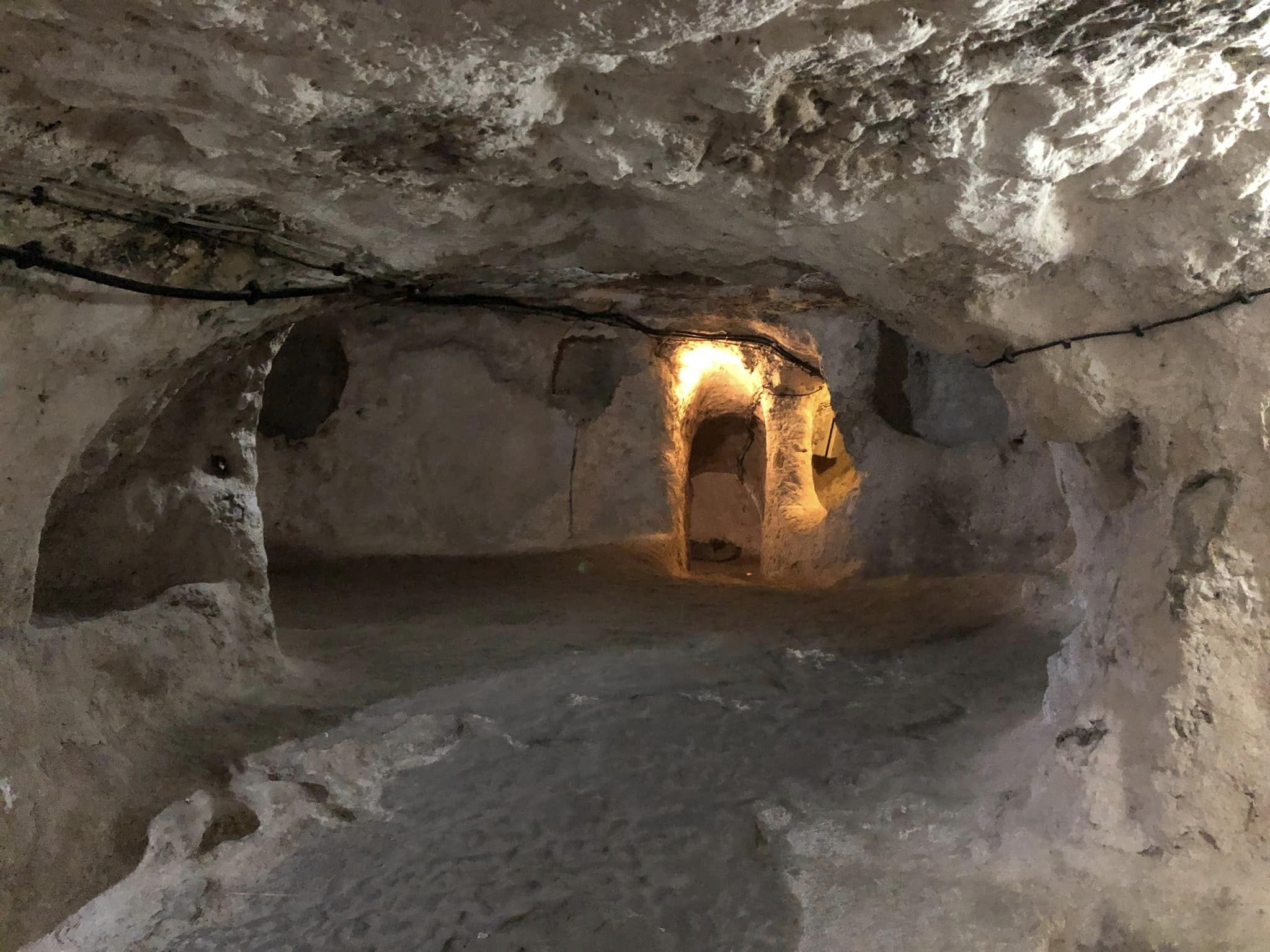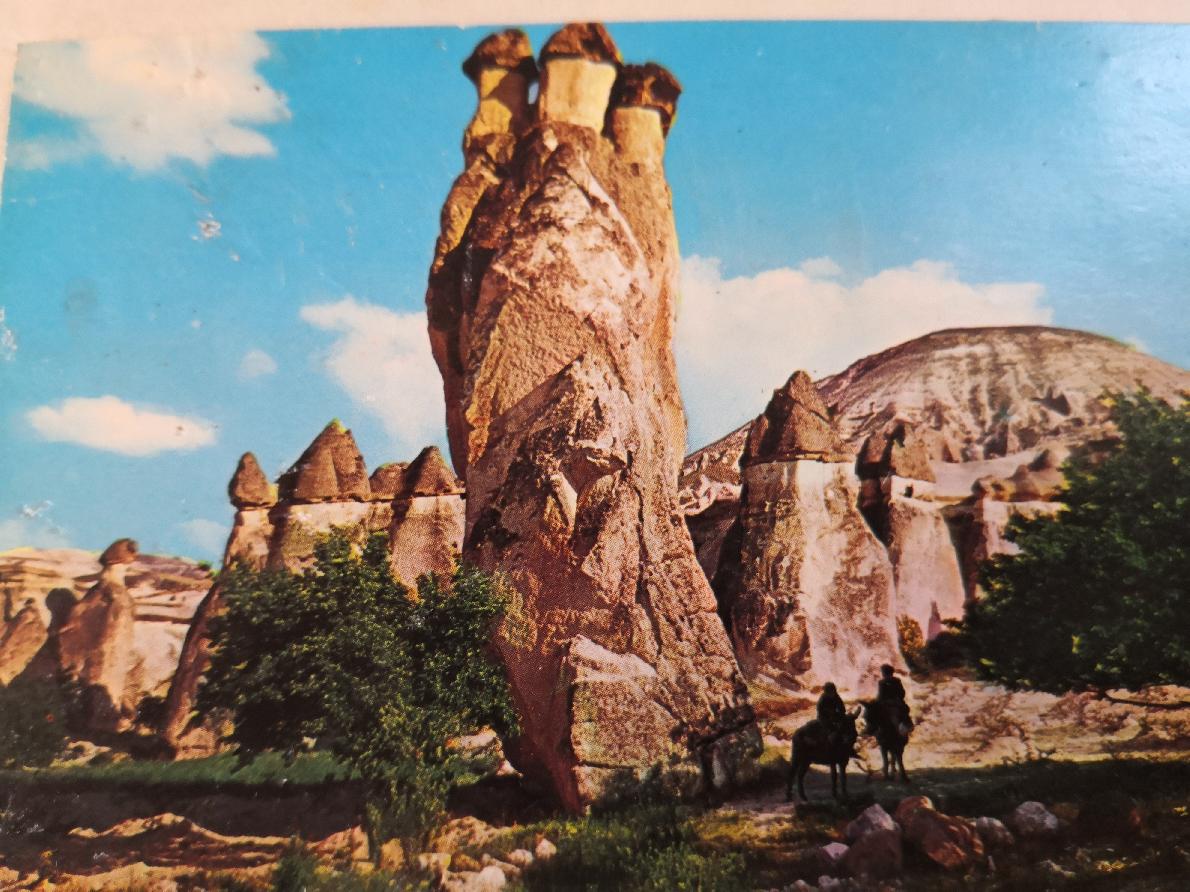
AsianOverland.net
Tour Guide - Itinerary
Asian Overland Sydney to London
Date 20/04/2024CAPPADOCIA, TURKIYE
ASIANOVERLAND.NET SYDNEY TO LONDON DAY 303/142/54: ADANA TO CAPPADOCIA, TURKIYE
July 1980 and 10 November, 1980
On the eastbound overland in July, 1980, I was driving late at night on the Anatolian plateau with everyone else asleep in pitch black darkness with starlight only, at our maximum speed of about 48 miles per hour, when my bus Knackers suddenly increased speed down a steep ravine (yes, Knackers could do more than 50 miles per hour, going steeply downhill...).
I slammed on the brakes, only to find that my foot went flat to the floor, with no braking or slowing effect whatsoever. It was my first trip driving a double decker, so I had only recently learnt the double clutching gear change actions required to slow the speeding bus (no bus driving licences were ever even mentioned in my presence at Top Deck Travel). I went to neutral, hammered the accelerator, and finally managed to crash the gear box down from 5th to 4th gears, producing massive grinding and crunching gear box sounds …..... and a slowing effect as I veered around the steep corners. I then managed to crash the crunching gear box down to 3rd, … then second, and finally had the bus under control.
The brake drums were gone completely, so I had to telex London for new brake drums, which arrived at Ankara airport a week later. No real time was lost though, as we didn’t have Iranian visas anyway, and it took me a week to obtain Iranian visas for the punters (except the three Americans, who flew over Iran). The punters on that trip spent the whole week in Cappadocia (except for a quick trip to the Iran embassy in Ankara to prove they were real people and not CIA agents), while I stayed in Ankara with the punters' passports to hassle the Iranian embassy on an hourly basis, and await the brake drums. The photo in the Cappadocia camping ground (taken by punter Nei Harvey), includes our driver Gary Hayes extracting the melted brake drums from Knackers.
Cappadocia is the critical crossroad area on an overland trip, as you can drive east from Kayseri past Mount Ararat to Tehran, all the way to Pakistan, provided you have visas and there is no war, as we did on our eastbound overland. If not, you travel south to Jerusalem, Petra and Aqaba. If you’ve already done all that, as we had, you can travel west to Konya and then through western Turkey to Europe.
Cappadocia is a historical region in Central Anatolia, largely in the Nevşehir and Kayseri provinces in Turkey (map from Greco-Roman period pictured).
From 522BCE, Cappadocia was included in the third Persian division established by Darius the Great, but continued to be governed by rulers of its own, who were all more or less tributaries of the Great King of Persia.
At the time of the Ionian Revolt, military rebellions by some Greek regions of Asia Minor against Persian rule, lasting from 499 BC to 493 BC, the Cappadocians were reported as occupying a region from Mount Taurus to the vicinity of the Black Sea. At the heart of the rebellion was the dissatisfaction of the Greek cities of Asia Minor with the tyrants appointed by Persia to rule them (499 BC). Cappadocia did not join the rebellion.
After conquering the Persian Empire, Alexander the Great tried to rule the area through one of his military commanders, but Ariarathes, a Persian, became king of the Cappadocians. As Ariarathes I (332–322 BC), he was a successful ruler, and he extended the borders of the Cappadocian Kingdom along the Black Sea.
The name Cappadocia, traditionally used in Christian sources throughout Christian history, and defines a region of exceptional natural wonders, in particular characterized by fairy chimneys and a unique historical and cultural heritage.
Cappadocia contains several underground cities (we will visit Kaymaklı Underground City tomorrow). The Cappadocian underground cities have vast defence networks of traps throughout their many levels. These traps are very creative, including such devices as large round stones to block doors and holes in the ceiling through which the defenders drop spears.
© This work is copyright. Apart from any use permitted under the Copyright Act 1968, no part may be reproduced by any process, nor may any other exclusive right be exercised, without the permission of Peter Searle, peter@portseavillageresort.com; 1980-2024.
Website built by Justin O’Dea www.webdeveloperdocklands.com.au





